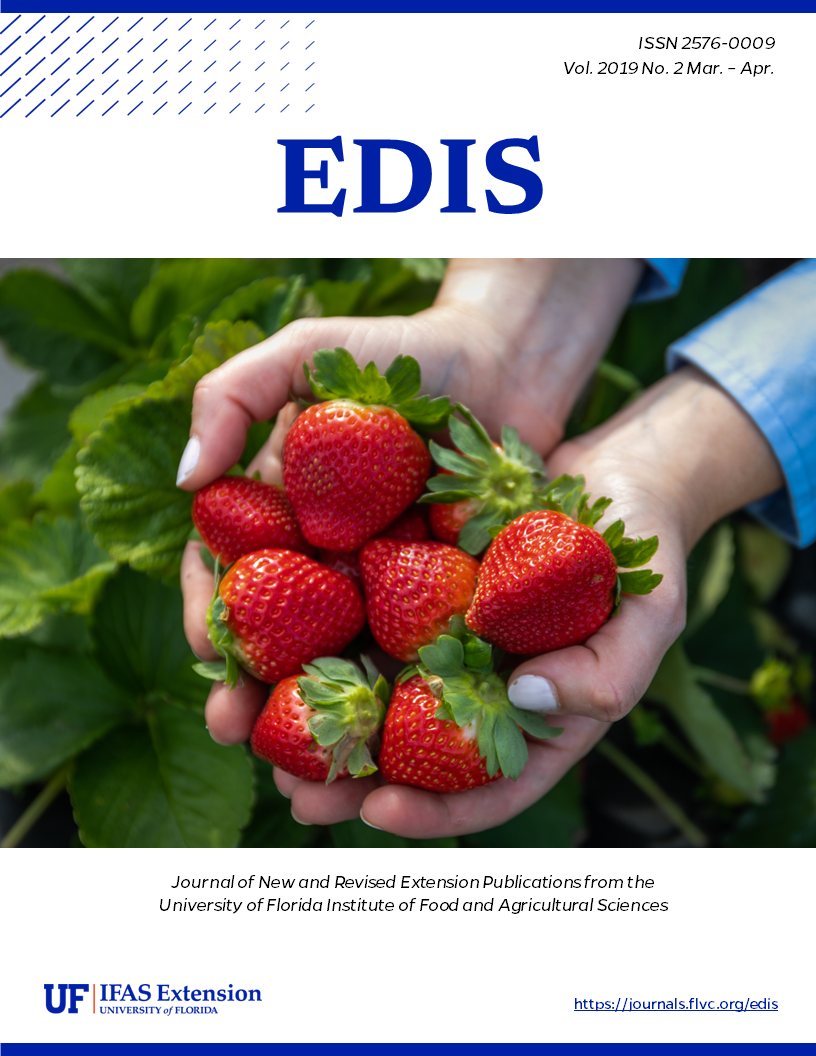Abstract
Microcephalothrips abdominalis (Crawford 1910) (Figure 1) belongs to the order Thysanoptera and the family Thripidae with members commonly known as thrips. Thrips are small, slender-bodied insects with fringed wings, inhabiting diverse ecological niches. Thrips are often cryptic in nature. Microcephalothrips abdominalis prefers to feed on plants in the composite family and therefore is commonly known as composite thrips. Flowers of this family are generally composed of a disk with a ray of petals extending at the rim of the disk. Some flower heads are composed only of a disk or a ray and could be in clusters in some species.
https://edis.ifas.ufl.edu/in1232
References
Ananthakrishnan TN, Varatharajan R, Gopinathan, K. 1981. Seasonal periodicity of thrips infesting some Compositae in relation to pollination. In Proceedings of the Indian National Science Academy Calcutta B47(6): 811-815.
Bailey SF. 1937. The composite thrips, Microcephalothrips abdominalis (Crawford). The Canadian Entomologist 69(6): 121-126. https://doi.org/10.4039/Ent69121-6
Childers CC, Nakahara S, Beshear RJ. 1994. Relative abundance of Frankliniella bispinosa and other species of Thysanoptera emerging from soil beneath 'Navel' orange trees in Florida during spring flowering. Journal of Entomological Science 29(3): 318-329. https://doi.org/10.18474/0749-8004-29.3.318
Choi DC, Choi JS, Na JS, So JD, Choi BJ, Woo KS. 1991. Species distribution and seasonal fluctuation of rice thrips in paddy field in Chonbuk Province. The Research Reports of the Rural Development Administration (Korea Republic). Crop Protection 33: 50-53.
Cluever JD, Smith HA. 2017. A photo-based key of thrips (Thysanoptera) associated with horticultural crops in Florida. Florida Entomologist 100(2): 454-467. https://doi.org/10.1653/024.100.0208
Crawford DL. 1910. Thysanoptera of Mexico and the South, I. Pomona College Journal of Entomology 2: 153-170.
Funderburk J, Mound L, Sharma J. 2007. Thysanoptera inhabiting native terrestrial orchids in northern Florida and southern Georgia. Journal of Entomological Science 42(4): 573-581. https://doi.org/10.18474/0749-8004-42.4.573
Gopinathan K, Varatharajan R, Ananthakrishnan TN. 1981. Incidence of Microcephalothrips abdominalis (Crawford) (Thysanoptera: Insecta) in relation to the pollination bio1ogy of the weed Ageratum conyzoides Linn. (Compositae). Proceedings of the Indian National Science Academy B47 (4): 505-509.
Greber RS, Klose MJ, Teakle DS, Milne JR. 1991. High incidence of tobacco streak virus in tobacco and its transmission by Microcephalothrips abdominalis and pollen from Ageratum houstonianum. Plant Disease 75(5): 450-452. https://doi.org/10.1094/PD-75-0450
Jones DR. 2005. Plant viruses transmitted by thrips. European Journal of Plant Pathology 113(2): 119-157. https://doi.org/10.1007/s10658-005-2334-1
Kajita H, Hirose Y, Takagi M, Okajima S, Napompeth B, Buranapanichpan S. 1992. Thrips on orchids in Thailand. Applied Entomology and Zoology 27(1): 174-175. https://doi.org/10.1303/aez.27.174
Mirab BM, Najafabadi SSM, Khoshnood N. 2015. Thrips pests on ornamental plants in Mahallat, Markazi Province, Iran. Journal of Ornamental Plants 5(4): 223-229.
Okada T, Kudo I. 1982. Relative abundance and phenology of Thysanoptera in a tea field. Japanese Journal of Applied Entomology and Zoology 26(2): 96-102. https://doi.org/10.1303/jjaez.26.96
Pizzol J, Desneux N, Poncet C, Reynaud P. 2011. Microcephalothrips abdominalis (Thysanoptera: Thripidae) discovered in southern France. In International Symposium on Advanced Technologies and Management Towards Sustainable Greenhouse Ecosystems: Greensys 2011 952. pp. 785-792.
https://doi.org/10.17660/ActaHortic.2012.952.99
Prasada-Rao RDVJ, Reddy AS, Reddy, SV, Thirumala-Devi K, Rao SC, Kumar MV, Subramaniam K, Reddy YT, Nigam SN, Reddy DVR. 2003. The host range of Tobacco streak virus in India and transmission by thrips. Annals of Applied Biology 142(3): 365-368. https://doi.org/10.1111/j.1744-7348.2003.tb00262.x
Sharman M, Persley DM, Thomas JE. 2009. Distribution in Australia and seed transmission of Tobacco streak virus in Parthenium hysterophorus. Plant Disease 93(7): 708-712. https://doi.org/10.1094/PDIS-93-7-0708
Unless otherwise specified, articles published in the EDIS journal after January 1, 2024 are licensed under a Creative Commons Attribution-NonCommercial-NoDerivs 4.0 International (CC BY-NC-ND 4.0) license.

